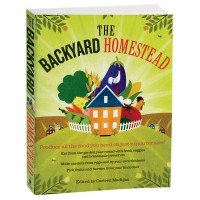
Everything Old is New Again
|
|
|
National Garden Bureau members will encourage the art and craft of gardening with
seed using the Great Gardeners Use Seed™ logo.
|
The National Garden Bureau launches a campaign to revitalize the ease and pleasure
of growing from seed. This logo will be used to identify educational information on
gardening from seed or bedding plants from seed. National Garden Bureau members will
encourage the art and craft of gardening with seed using the Great Gardeners Use
Seed™ logo. This is a commitment to reach teachers, youth, and adults teaching the
benefits of gardening with seed and plants from seed.
Founded in 1920, the Bureau's original mission was to disseminate basic instructions
for backyard gardening. In the 21st century, the Bureau has published Today's Garden
and the "Year of" fact sheets and offered the same valuable gardening advice on the
website,
www.ngb.org
In addition to general public education, the Bureau has sponsored programs that teach
youth science with the use of garden-based activities. The Bureau acknowledges that
previous generations were taught to garden by their parents, grandparents, or other
family members. Millions of children and older youth have not had the opportunity
to sow a seed and nurture the plant grown from seed.
|
|
|
A favorite pink Cleome, 'Pink Queen,' Cleome hasslerana, came on the scene in 1942.
|
Garden-based activities - the GrowLab Program Over 50 GrowLabs have been donated
to teachers for classroom use. A GrowLab is a tabletop structure that serves as a
germination chamber and growing laboratory for children to sow seed, nurture
growing plants, learn botany and become familiar with plant needs. Teachers are
given guidelines, seed, soil, and the tools to lead youth through the growing
process. Each spring the Bureau contacts the teachers to learn if they have needs
for materials to continue using the GrowLab. Teachers applaud this program. The
Bureau works with the National Gardening Association to provide the GrowLabs and
necessary supplies.
|
|
|
Hollyhock 'Indian Spring,' Alcea rosea, was a 1939 AAS winner.
|
Teacher's Educational Kits The Bureau partners with the National Gardening
Association to distribute educational kits to teachers. There were two educational
kits created this year. Since 2005 is the 'Year of the Melon,' the fact sheets
and melon seed were sent to teachers who requested the kit on the NGA website.
Each year more than 500 educational kits are sent to teachers upon request.
This year 37,000 teachers received seed packets donated primarily by the
National Garden Bureau members and a poster sponsored by Dole Foods. This
educational kit was organized by NGA to celebrate National Gardening Month
in April. The kits were sent to teachers who subscribe to the Weekly Reader.
The Bureau is supporting numerous projects that teach the miracle of seed,
growing plants from seed and bedding plants from seed.
This NGB Today's Garden proudly features the following AAS winners that have
earned the status of "heirlooms."
|
|
|
Tithonia 'Torch,' Tithonia rotundifolia, (Mexican sunflower) came onto the scene in 1951.
|
Tithonia 'Torch,' Tithonia rotundifolia, (Mexican sunflower) came onto the
scene in 1951.
It is curious that at the same time modern hybrid plants are getting attention,
heirlooms are garnering more appeal among home gardeners. So, what are heirlooms?
They are cultivated plant varieties that have been grown for at least 50 years,
time-tested and open-pollinated. Chiefly of European descent, heirloom seeds
have been passed down from one generation to the next. Through the centuries,
people selected out and conserved seeds of those plants with enhanced
characteristics such as flavor, vigor, scent, and local hardiness. Heirloom
seeds were often among the few belongings immigrants brought to America. Many
heirlooms are still being kept in families and some are now available to
gardeners everywhere.
What accounts for the ever-growing interest in and cultivation of more heirlooms?
People are rediscovering the great diversity-flavor, color, texture, fragrance,
size, form, and shape-of flowers, vegetables, and herbs that have been around
for many years and enjoyed by people of many nations and cultures. You may
already be growing heirlooms and not realize it.
More than 40 of the All-America Selections varieties can be considered heirlooms
because after more than 50 years they are still available. Among the initial
AAS introductions-from the early 1930s-was the Gleam Series of Nasturtium,
Tropaeolum majus. 'Golden Gleam,' with its brilliant gold flowers-and spicy
flavor-made its debut in 1933, followed by the handsome deep red 'Scarlet Gleam'
and the 'Gleam Mix,' both in 1935. Hollyhock 'Indian Spring,' Alcea rosea, a
1939 AAS winner, bears single and semi-double blossoms in shades of pink, rose
and white on impressive 7-foot stems. A favorite pink Cleome, 'Pink Queen,'
Cleome Hasslerana, came on the scene in 1942. In 1947, the ever-popular
French Marigold 'Naughty Marietta,' Tagetes patula, with its bright yellow
petals marked with maroon at their centers, made its debut.
'Purple Robe' nierembergia, Nierembergia hippomanica, which was awarded AAS
status in 1942, is still the only purple nierembergia grown from seed. Zinnia
'Persian Carpet,' Zinnia haageana, (also called Mexican zinnia), an AAS
selection for 1952, bearing variegated fully to semi-double flowers in shades
of red, gold and white, is popular for attracting butterflies.
Two favorite Morning Glories, Ipomoea purpurea, iridescent 'Pearly Gates'
and 'Scarlett O'Hara' date back to 1942 and 1939, respectively. Tithonia
'Torch,' Tithonia rotundifolia, (Mexican sunflower) came onto the scene in 1951.
The AAS heirlooms include several classic vegetables: Cucumber, Cucumis sativus,
'Straight 8' (1935), 'Salad Bowl' lettuce, Lactuca sativa, (1952), 'Clemson
Spineless' okra, Abelmoschus esculentus, (1939), and 'Cherry Belle' radish,
Raphanus sativus (1949). It may be a shock to realize seeds that were
introduced during your childhood are designated as heirlooms. These
open-pollinated varieties have withstood the test of time as AAS Winners
and heirlooms.
Editor's Note: Source of this article is The National Gardening Bureau




 The food industry's digusting secrets exposed. How to protect yourself.
Click Here!
The food industry's digusting secrets exposed. How to protect yourself.
Click Here!
